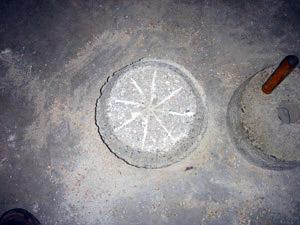


Moritz: Grain-Mills and Flour in Classical Antiquity. Some are in: Gerhard Zimmer: Römische Berufdarstellungen. There are more of these reliefs, but they are difficult to find. This small relief was to be seen in the handle of an oil lamp. How the horse is harnessed to the meta is not easy to see. It should walk against the sun.Īt top the funnel for the corn, then the upper stone called the meta (in Latin) and the lover stone called the catillus. Take a look in Google for: History of Collar Harnessing in Source Pictures. The hammer must be involved in the reconstruction, but how? There is a hammer to be seen on the left of the relief. Thumbnails - press to get the full resolution So you have to find a technical solution so the clearness can be adjusted step by step from zero to one millimetre. On the other hand, if the gab is to big the corn will not be grained. If there is no gab between the two stones the donkey cannot turn the mill, because the friction between the stones is too big. It is therefore up to you to reconstruct how the animal was harnessed to the upper stone.Īnother big problem which should be solved simultaneously is dealing with the clearness between the upper and lower millstones. Two of these tombstones are made so accurately that we can see most of the details except for the harnessing of te donkey. Unfortunately it is only the millstone that survives, the entire wooden framework has disappeared.ĭuring the three first centuries of our era many bakers liked to have a relief on their tombstone, depicting a corn mill turned by a donkey. In most part of the Roman World we can find millstones, which are shaped, like an hourglass. This type of quern, a disc with two or three handle holes, is usually only found in Scotland and Northern England.Hourglass shaped millstones An old archaeological problem, but still not solvedĪ part of a story about hourglass shaped millstones Rotary querns were invented around the 1st century BC and were prominent up until the advent of mechanized mills in the mid to late 19th century. This indicates that the handles were loose rather than wedged, which with the tapering and collared hopper indicates a type of disc quern which has been around since the 4th century AD. All the handle holes show signs of wear and one had worn right through. The grain is fed in through a central hopper and there are three smaller holes for handles to fit into to turn the handstone. The two circular stones fit together with the top mobile stone, called the handstone, rotating over the bottom stationary stone, called the quern thereby grinding any grain between them. It was used to grind grain into flour for domestic purposes. This rotary quern of the disc type is made from a hard stone called schist.


 0 kommentar(er)
0 kommentar(er)
